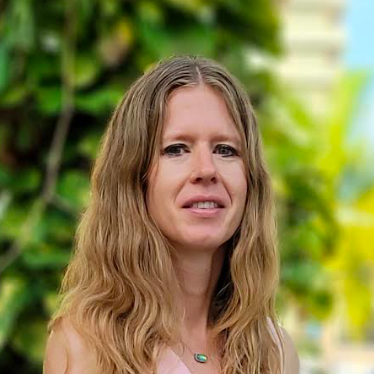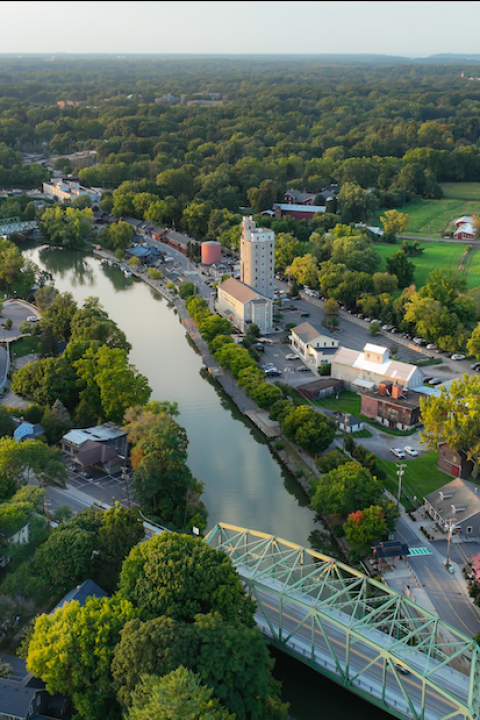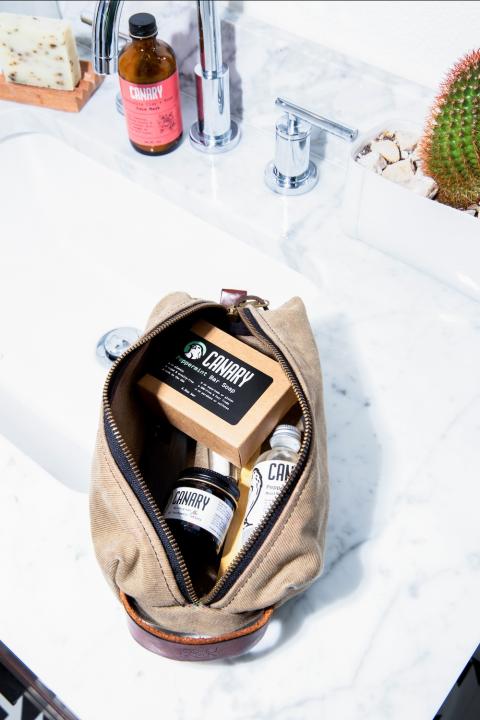
(Image: Louis Hansel/Unsplash)
Craft beer, one of the world’s oldest alcoholic drinks, has seen its fair share of changes. As it booms in the U.S., another trend bubbled to the surface — sustainability. Brewers have already adopted many environmentally-friendly practices, yet they’ve barely tapped into the rapidly growing organic beer market. Could this be a promising new direction for the industry?
Despite the limited current market, sales of organic beer in the U.S. increased 10 times since the early 2000s. Some craft breweries have been organic for decades, and big beer brands jumped on the bandwagon a few years ago with releases such as Michelob’s Ultra Pure Gold and line of hard seltzers.
Beer remains one of the most popular drinks in the U.S., exceeded only by water, coffee and soft drinks. Catering to environmentally conscious consumers could unlock an untapped potential for the craft beer market, particularly in the organic sector.
Organic beer 101
Unless you’ve passed through life assiduously avoiding frat parties, dive bars and backyard barbecues, you know what beer is. But what exactly is organic beer?
“To use an organic ingredient means it's cultivated without the use of inorganic fertilizers or pesticides,” said John Gonzales, founder of Leashless Brewing, an organic craft brewery in Southern California. “There's no genetically modified organisms involved in the manufacturing of that raw material. There's no human sludge or no ionization.”
A U.S. Department of Agriculture (USDA) organic certification for a brewery or farm has to be renewed every year, and getting it in the first place can be a complex, multiple-step process. Further, USDA organic labels come in different varieties. A 100 percent organic label is the strictest designation, meaning all ingredients are organic. However, a beer simply labeled as “organic” means 95 percent of the ingredients are organic, whereas “made with organic ingredients” means at least 70 percent of the beer’s ingredients are organic.
“That level of authenticity when you see that USDA organic logo, you know 100 percent it's legit,” Gonzales said. “There's no way to get around it. We go through audits annually that look at what we produce and what ingredients we're using … There's an audit trail so that they could trace a bag of our grains all the way to the middle man and the actual grower.”
The challenges of organic ales
Despite promising growth in the U.S. organic food market, organic beer is just a drop in the mammoth beer production bucket. Less than 1 percent of beer is currently certified as organic. The reasons why are as varied as IPA styles at a hipster bar.
First of all, the availability of beer’s ingredients can be a roadblock. The most commonly used grain for beer is barley. However, as of 2016, less than 3 percent of U.S.-grown barley is organic. Limited markets and non-premium grain prices are the main reasons farmers don’t grow more of it, according to a survey from Oregon State University.
Then there’s hops, an essential ingredient for beer’s flavor and stability. Hops are difficult to grow organically because they’re susceptible to disease, fungal infection and insects. Weeds also compete with them for water and nutrients, which they need in large quantities. Normally, this would be taken care of with pesticides and synthetic fertilizers, so switching to organic production remains challenging.
However, long-standing relationships can be advantageous in obtaining organic ingredients. For instance, the Peak Organic Brewing Company has connected with multiple local farms since it opened in 2007.
“One of our favorite things is developing those relationships with growers, seeing where what we are using is grown, how it's made, and who's making it,” said Jon Cadoux, the brewery’s founder. “But for sure that's time-consuming. That could be a barrier to entry for somebody new.”
In addition to supply constraints, the higher costs involved may deter some brewers. Organic ingredients are more expensive, and certification by the USDA costs anywhere from a few hundred to a few thousand dollars.
High prices could also deter consumers. “A while ago, there was such a big price premium on everything organic that people were scared away,” Cadoux said. “But I think that has reduced a lot lately.”
Beer’s environmental impact
Cleaning up the process of changing barley to beer is difficult, but it’s worth it. The environmental impact of one of our most cherished beverages is sobering.
To begin with, growing barley and hops generally requires herbicides, insecticides and fungicides. These pesticides contaminate the soil, water and vegetation, and they can be toxic to insects, fish and birds. Some of these pesticides even persist into beer, although normally in reduced quantities.
In addition, it takes copious amounts of energy and water to brew beer. The early stages of beer involve boiling, which is energy-intensive, while refrigeration and packaging also require fuel. Breweries could pay upward of $55,000 annually for energy, according to one estimate.
Then there’s water. Used at almost every stage of the process, brewing a pint of beer requires four to 10 pints of water. And that same pint generates three to 10 times the amount of wastewater. While nontoxic, this water has organic compounds and can pollute freshwater if untreated.
Brewing also produces solid waste in the form of spent grain, yeast, hops and other products. However, the spent grain and yeast can be used for compost, livestock feed or products like sweeteners.
Finally, brewing emits greenhouse gases. Estimates for a liter of beer (equal to almost three 12-ounce bottles) are modest — equivalent to driving two to five miles in a gasoline-fueled vehicle. However, given the average American over the age of 21 drinks around 107 liters of beer per year, this can quickly add up. The largest contributor to beer’s carbon footprint comes from the packaging, followed by the production of the raw materials, typically barley.
Brewing sustainably
In spite of the challenges, many brewers are grabbing the beer by the horns and tackling sustainability head on. For instance, breweries are using biodegradable four- and six-pack rings and fiber-based, recyclable bottles. Others are capturing, cleaning and reusing wastewater, using solar power, and even planting trees and restoring seagrass meadows.
Going organic also has numerous advantages. “Organic [agriculture] uses 30 percent less water than conventional [agriculture],” said Gonzales of Leashless Brewing. “It uses around 40 percent less energy and sequesters about 40 percent more carbon into the soil just through its practices. When we make and sell a pint of organic beer, we know that we have done the best we can to make sure that we are keeping the world as clean and functional as possible.”
Additionally, breweries' support of organic farmers reduces pesticide use and its adverse impacts on the environment. Organic farming also protects agricultural workers against the harmful effects of pesticide exposure, including respiratory illness, arthritis, cancer, birth defects, infertility, and skin, liver, kidney and neurological issues.
“I always thought ingredients that are locally sourced, sustainably, taste better,” added Cadoux of Peak Organic Brewing Company. “It's kind of always felt like a win, win. If something tastes better and is also better from a sustainability standpoint, why not do that?”
Finally, there’s the business angle of organic brewing. While the market share for organic beer is growing steadily, craft beer’s overall share is decreasing, Gonzales said.
“When we go to the buyers and say, 'Hey, we're local, we have an award-winning beer, and we're also organic,' we just added several value-added propositions to a relatively fairly-priced product,” Gonzales said. “So, there's a differentiation tactic to being organic.”
The future of the organic beer market
The organic brewing world may be small at the moment, but the outlook is optimistic.
“We are where the organic wine world was in the late '80s, early '90s,” Gonzales said. “So, yes, we're definitely growing … I think it's a longer road for some of us. But certainly, I think we have a better moat than most people and we have a better story to tell. And yes, people do increasingly look for things that are healthier for them.”
The organic food market in the U.S. is predicted to grow by nearly 9 percent annually until 2027, outpacing the growth of the overall food market. With U.S. beer sales totaling nearly $115 billion in 2022, there’s ample shelf space for organic beer.
“We make beer that we know is good for the environment,” Gonzales said. “And we thought if we can, we should use a brewery to help change people's habits — one pint of beer at a time.”

Ruscena Wiederholt is a science writer based in South Florida with a background in biology and ecology. She regularly writes pieces on climate change, sustainability and the environment. When not glued to her laptop, she likes traveling, dancing and doing anything outdoors.














